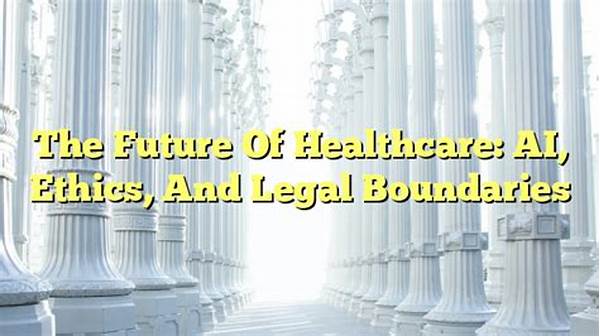H1: Legal Boundaries in AI Development
In the bustling world of technology, Artificial Intelligence (AI) stands out as one of the most intriguing and transformative innovations. It’s like the rockstar of the tech world, constantly grabbing headlines and the public’s imagination. From self-driving cars to virtual assistants, AI promises to revolutionize the way we live and work. But as with every rockstar, there’s always the backstage drama – in this case, it’s the legal boundaries in AI development. Imagine a world where machines operate with such autonomy that the lines between legality and function start to blur. Fascinating? Absolutely. Risky? You bet! It’s the kind of suspense-filled plot that could easily fill pages of a bestseller or stream as an endless binge-worthy series.
The dramatic backdrop in this AI saga is the legal landscape, filled with statutes, regulations, and policies, as technology outpaces law at a dizzying speed. Picture a tightrope walker balancing above a crowd, carefully treading between innovation and regulation. Now, that’s AI development for you! Governments, tech companies, and societal leaders race against time to create frameworks that ensure AI is used ethically while fostering innovation. This whirlwind dance between innovation and regulation isn’t just a tale of caution; it’s a testament to our ever-advancing society’s attempt to leverage AI for the greater good while dodging potential pitfalls.
H2: Navigating the Legal Maze of AI Development
Despite sounding like the setup for an epic sci-fi thriller, the trajectory of AI development is very much reality—a dynamic, evolving reality. One misstep can lead to legal quagmires or, worse, technology misused with dire consequences. Thus, understanding and setting legal boundaries in AI development isn’t just necessary; it’s critical. Stakeholders from every corner of society have their roles to play. Tech companies must innovate responsibly, policymakers need to legislate wisely, and we, the end-users, must stay informed. It’s a collective effort, an undeniable partnership in ensuring AI doesn’t morph into the very nightmares it aims to prevent.
—
To dive deeper, let’s take a look at some essential facets of these legal parameters that continue to shape AI’s evolution.
H2: The Crucial Importance of Legal Boundaries
As we eagerly anticipate a future where AI might predict our needs before we even voice them, ethical dilemmas emerge like pop-up ads you can’t close. Legal boundaries in AI development are designed to keep these dilemmas in check. From data privacy issues to accountability in AI-driven processes, the boundaries ensure there’s a playbook for resolving conflicts. It’s akin to having traffic signals in a world with self-driving cars—without them, chaos would reign supreme. That’s why policymakers focus on framing laws that safeguard data while promoting transparency and accountability.
H3: Data Privacy and AI Accountability
Data is the lifeblood of AI. However, with great power comes great responsibility—or in this case, legal responsibility. As AI systems collect and process vast amounts of personal data, questions about data ownership and privacy soar to the forefront. Who gets access to this data, and how much control do individuals have over their personal information? Also, when an AI system goes haywire, who is held accountable? Envisioning these challenges is crucial as developers and lawmakers outline legal boundaries. It’s a game of chess, each move meticulously planned to predict and mitigate risks.
Tracking AI’s evolution through a legal lens, the narrative isn’t always grim or daunting. There’s an optimistic note—imagine a world where AI processes can save lives, enhance productivity, and solve complex global challenges. By setting appropriate legal boundaries, this dream approaches reality. The message? Clarity and collaboration are key! It’s time to fasten your seatbelts as we address the intricate, exhilarating crossroads of technology and law.
—H2: Considerations for Legal Boundaries in AI Development
The path forward in AI development and its accompanying legal aspects can make or break the tech’s role in society.
These considerations aim to illustrate the multifaceted nature of legal boundaries in AI development, where every choice significantly impacts technological and societal futures. Holding hands with a hopeful outlook and realistic undertone, we’re drawn into a world of innovation that could indeed lead to a brighter, smarter tomorrow.

